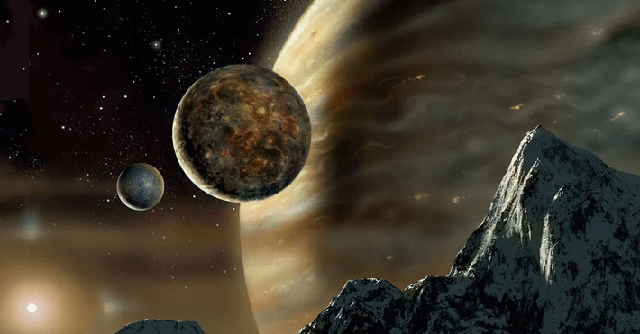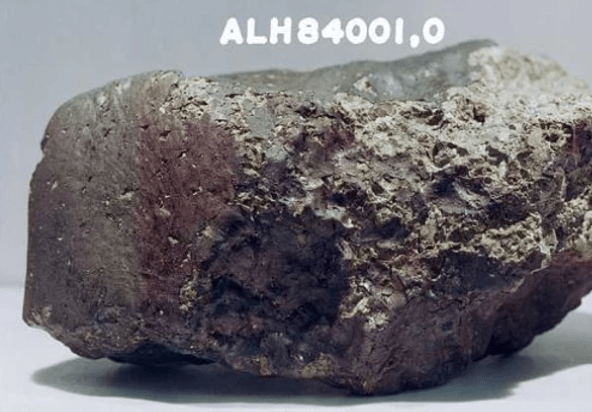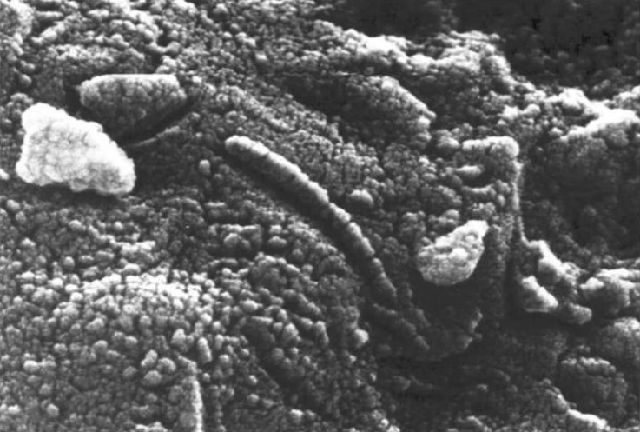Did life on Earth originate from Mars or other celestial bodies?
With more and more discoveries about space each year, more and more people believe that life originated in space. Along with that, believers in the Panspermia hypothesis have also increased over the years.

Carl Sagan, the world famous astronomer, once stated that the nature of life on Earth and the possibility of extraterrestrial life are two sides of the same coin. And both of these problems will be answered in the case of the Panspermia hypothesis.
The Panspermia hypothesis implies that life exists outside of Earth and that life as we know it on our planet originated outside of our atmosphere. The Panspermia hypothesis posits that a variety of astronomical objects, including other star systems, asteroids, comets, and even Mars, contributed to life on Earth.
What is Panspermia Theory?
Panspermia is an age-old concept that dates back to ancient Greece. According to the Panspermia hypothesis, humans may be an organism that evolved in other regions of the universe and whose genes entered the Earth through comets or meteorites that impacted the Earth’s surface. In modern times, prominent astronomers such as Chandra Wickramasinghe and Fred Hoyle have supported this hypothesis.
Although to date there is no clear evidence to support this concept, important discoveries in the last century have made the Panspermia hypothesis more possible. Some evidence supports the Panspermia hypothesis that life could not be controlled in the geological record occurring around 3.8 billion years ago, close to the end of the Late Heavy Bombardment (LHB). The LHB is a time period when the odds of collisions between planets in the solar system were much higher than they are today.
Many say that any life on Earth before the LHB would be wiped out, and that life today comes from outer space, through collisions with Earth. This is just speculation, but when compared to the time when life appeared on Earth, it has weight to the argument.

Did life really come from Mars?
A meteorite was discovered in 1984 in the Allan Hill region of Antarctica. At the time, the meteorite was only numbered ALH8400, and for the next decade, it fell into disrepair.
However, in 1994, scientists through geochemical and microscopic research discovered that this meteorite originated from Mars and it is a very special Martian meteorite.
ALH8400 was found to contain complex chemical molecules called polycyclic aromatic hydrocarbons (PAHs), which are commonly involved in microbial activity.
In addition, they discovered iron sulfide associated with magnetite; Normally, these two minerals do not coexist in the presence of carbonate salts unless they are made by life.
In addition, the scientists examined the meteorite and discovered strange-looking nanostructures in shapes that closely resemble certain species of bacteria. These three unique finds in the meteorite lead many experts to believe that they are evidence of the possibility of life on Mars.

These new revelations about meteorite ALH84001 have forced some scientists to reexamine it and express renewed interest in it. Over time, data supporting the idea of life on Mars has been questioned by many advocates of abiotic origins.
PAHs can easily form in abiotic environments when organic molecules are heated, and bacteria-like rod-like entities may be too small to ever be living organisms.
However, magnetite and iron sulfide are still considered as evidence for the presence of biology in ALH84001, as many magnetite particles have the same shape and size as bacteria.
There is currently no known process for the formation of magnetite particles of that type in combination with iron sulfide in the absence of biology. The question of whether or not life exists on Mars will likely remain unanswered until the Mars exploration missions are completed in 2030 (and possibly thereafter).
More evidence is being accumulated to support the hypothesis that Mars was once a wetter planet where life could have thrived in the distant past, but this is currently inconclusive. . Even if it is shown that life once existed on Mars, the possibility that life originating on Mars may have seeded life on Earth remains uncertain.

According to scientists, there are two major concerns about the prospect of life on Mars seeding life on Earth. The first is whether any life forms could have survived the trip from Mars to Earth. Second, is there a basis to think that life will be able to develop on Mars more and earlier than on Earth in the past? Surprisingly, both questions can be answered with a yes.
Even if the bacteria survive the impact event and the highly hostile environment of space, will they be able to survive the million-year journey from Mars to Earth? Interestingly, bacterial spores found from extinct bees trapped in a mixture of amber and brine in ancient salt crystals indicate that bacterial spores may have survived. up to 250 million years.
However, immersing brine or amber in a terrestrial salt crystal is still a mild environment compared to inside a space-roaming meteorite.
In addition, the scientists point out that they have reason to assume that life may have originally formed on Mars, but not on Earth. Although water is essential to life as we know it, its presence inhibits the production of the components that make up life. The very early history of the Earth indicates that it was almost covered by an ocean all over the world.
On the other hand, Mars has experienced periodic dry and wet periods throughout its early history.
According to a current idea of the origin of life, life began in shallow waters, or pools of water, which were repeatedly exposed to sunlight and cyclically dried out. This would lead to a steady accumulation of organic molecules with each dry cycle, eventually forming layers of complex organic matter that could become the building blocks of life.
Therefore, it is possible that life formed on early Mars more easily than on Earth. There is currently a large body of scientific evidence indicating that this is a very reliable theory.
The possibility of life coming from comets or asteroids
Another popular theory among Panspermian believers is about comets and asteroids. Chandra Wickramasinghe, an astronomer and mathematician, argues that life most likely originates from the interior of comets.
He repeatedly suggested that the trillions of cometary objects predicted to exist in the solar system were far more likely to have formed life than the early Earth’s environment.
Another possibility is that a comet may have passed through the upper atmosphere of a life-rich planet, allowing life to implant itself in the comet.
If comets bring life to Earth, they almost certainly bring water. Although it has long been thought that comets produce water on Earth, isotope tests of comets have shown that many of them have a different deuterium-hydrogen ratio than water found in the Earth’s sea. soil.
Did Life Come From Other Star Systems?
To begin with, most scientists question whether bacteria contained in microscopic lumps of dust or rock can survive the vast distances between stars, especially considering that a the journey can take hundreds of millions or perhaps billions of years.
In addition, it is believed that it is highly unlikely that any objects from other star systems will approach a planet in an alien star system close enough to collide with it. This opinion has changed dramatically in recent years, largely due to the discovery of two interstellar objects that had traveled through our solar system a few years earlier.
This has resulted in many scientists becoming receptive to the prospect of life moving not only between planets in the same solar system, but potentially between solar systems as well.
Current scenario of the Panspermia hypothesis
Since the Panspermia hypothesis was initially considered a possible scientific explanation, it has caused a lot of controversy. However, recent findings and technological advances have suggested that the Panspermia hypothesis may be possible.
Although no evidence has been revealed to prove that life exists on other planets or star systems, each new discovery raises the possibility that extraterrestrial life may soon be discovered.
at Blogtuan.info – Source: genk.vn – Read the original article here



